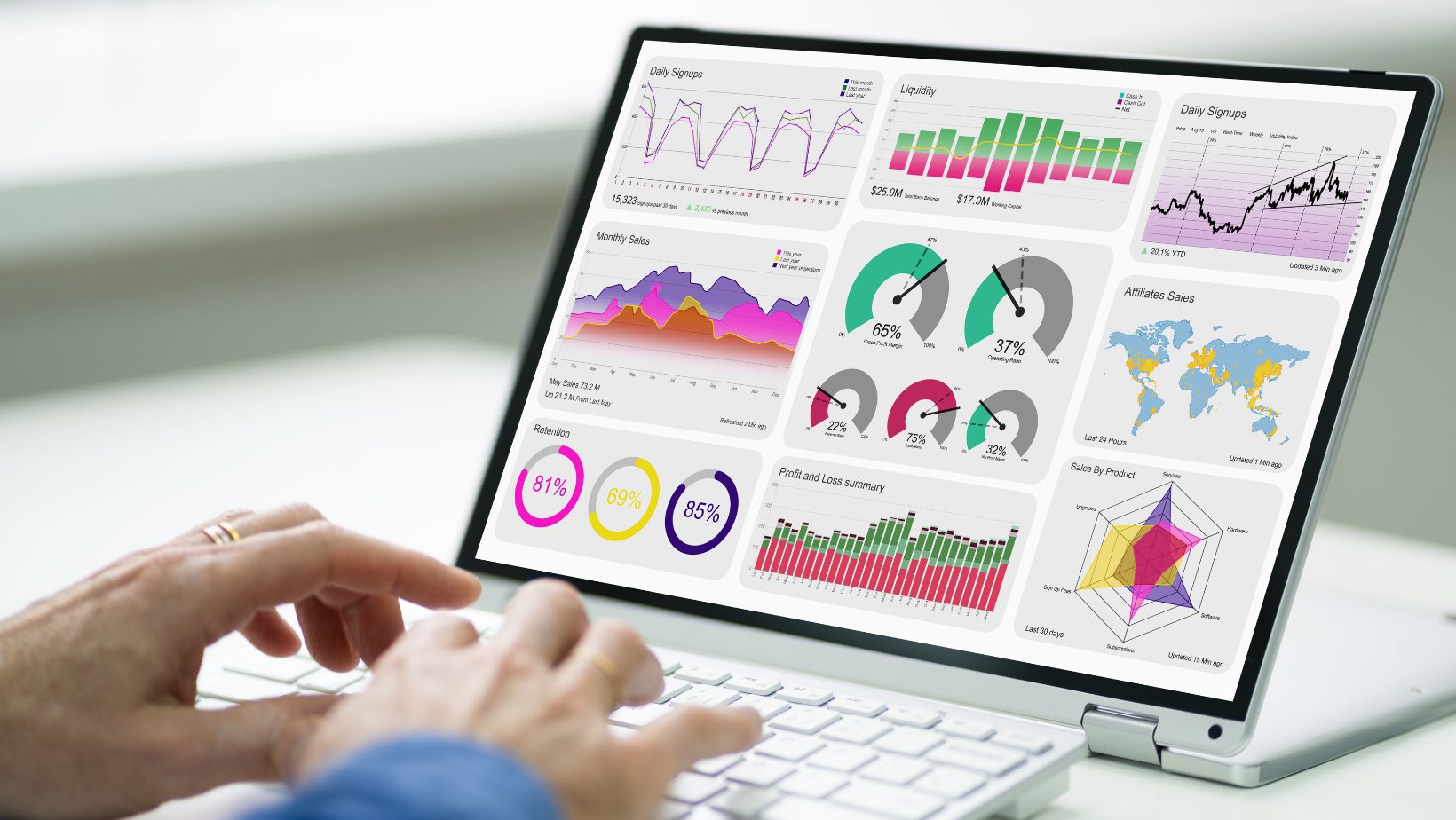When it comes to data analytics, having the right tools is crucial for efficient and accurate analysis. That’s where laptops specifically designed for data analytics come into play. These laptops are equipped with powerful processors, ample RAM, and high-capacity storage to handle the demanding computational requirements of data analytics tasks.
One key feature of laptops for data analytics is their processing power. With advanced processors like Intel Core i7 or AMD Ryzen 7, these laptops can handle complex algorithms and perform calculations in a fraction of the time compared to regular laptops. This allows data analysts to process large datasets more quickly, enabling faster insights and decision-making.
In addition to processing power, these laptops often boast generous amounts of RAM. With 16GB or even 32GB of RAM, analysts can easily manipulate and analyze massive datasets without experiencing any lag or slowdowns. This ensures smooth multitasking and seamless execution of resource-intensive statistical software like R or Python.
Furthermore, storage capacity is another important aspect when it comes to laptops for data analytics. These laptops typically offer spacious SSD drives with terabytes of storage space. This enables analysts to store vast amounts of raw data as well as processed results efficiently without compromising on speed or performance.
Laptops for Data Analytics
When it comes to data analytics, having the right laptop can make all the difference in your productivity and efficiency. With the vast amount of data that needs to be processed and analyzed, it’s crucial to have a laptop that can handle the workload without compromising performance. Here are some key factors to consider when choosing a laptop for data analytics:
- Processing Power: Data analytics tasks require significant processing power to handle complex computations and large datasets. Look for laptops with high-performance processors such as Intel Core i7 or AMD Ryzen 7, which offer multiple cores and higher clock speeds. This will ensure smoother multitasking and faster execution of analytical algorithms.
- RAM Capacity: The more RAM your laptop has, the better it can handle large datasets and perform simultaneous operations efficiently. Aim for at least 16GB of RAM, but if your budget allows, consider upgrading to 32GB or even 64GB for optimal performance when dealing with intensive data analysis tasks.
- Storage Type: Data analytics involves working with massive amounts of data, so having ample storage is essential. Opt for laptops with solid-state drives (SSDs) rather than traditional hard disk drives (HDDs). SSDs offer faster read/write speeds, which significantly improve overall system responsiveness and reduce data access times.
- Graphics Capability: While not as critical as processing power or RAM capacity, a dedicated graphics card can enhance certain aspects of data visualization and modeling in data analytics workflows. Look for laptops with discrete GPUs from NVIDIA or AMD, such as GeForce RTX or Radeon RX series cards.
Remember that these considerations may vary based on specific use cases within the field of data analytics. It’s always a good idea to research and compare different laptop models, read reviews, and consult with experts or colleagues in the field before making your final decision.

Understanding the Hardware Requirements for Laptops for Data Analytics
When it comes to laptops for data analytics, understanding the hardware requirements is crucial. The right combination of components can significantly impact performance and productivity. Here are some key factors to consider:
- Processor: A powerful processor is essential for handling complex computations and data processing tasks. Look for laptops with high-performance CPUs such as Intel Core i7 or AMD Ryzen 7 processors.
- RAM: Random Access Memory (RAM) plays a vital role in multitasking and running resource-intensive applications smoothly. For data analytics, it is recommended to have at least 16GB of RAM, although having 32GB or more can further enhance performance.
- Storage: Large datasets require ample storage space. Opt for laptops that offer solid-state drives (SSDs) instead of traditional hard disk drives (HDDs). SSDs provide faster data access, reducing loading times and improving overall system responsiveness.
- Graphics Card: While not as critical for data analytics compared to tasks like gaming or video editing, a dedicated graphics card can still be beneficial when working with visualizations or GPU-accelerated algorithms. Look for laptops with discrete GPUs like NVIDIA GeForce or AMD Radeon series.
- Display: Data visualization is an integral part of data analytics, so having a high-quality display is important. Consider laptops with IPS panels and higher resolutions (such as Full HD or even 4K) to ensure clear visuals and better color accuracy.
In conclusion, when searching for laptops for data analytics, prioritize a powerful processor, sufficient RAM and storage, consider a dedicated graphics card if needed, opt for a high-quality display, and ensure decent battery life. By taking these hardware requirements into account, you’ll be well-equipped to handle data analysis tasks efficiently.




